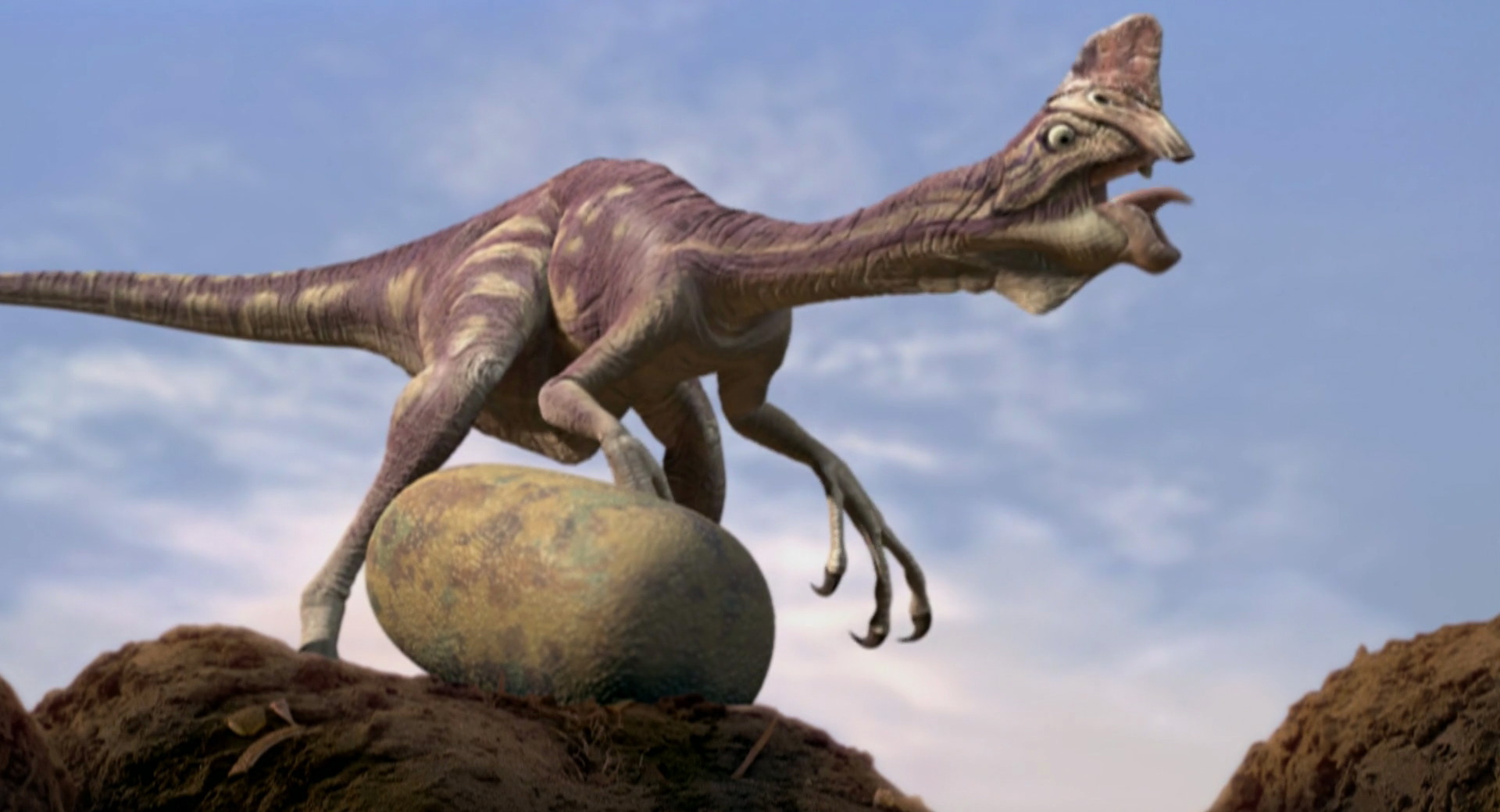 Makes approximately 80 million years, the area currently covered by sands and rocks of the Gobi desert was home to a large number of dinosaurs and mammals. In this environment rife Protoceratops without horns, carnivorous Velociraptor and various types of ankylosaurus, armored dinosaurs. We also found a dinosaur skeletons very unusual, the Oviraptor , a small theropod with a small domed skull, a toothless beak and a strange crest on the head.
Makes approximately 80 million years, the area currently covered by sands and rocks of the Gobi desert was home to a large number of dinosaurs and mammals. In this environment rife Protoceratops without horns, carnivorous Velociraptor and various types of ankylosaurus, armored dinosaurs. We also found a dinosaur skeletons very unusual, the Oviraptor , a small theropod with a small domed skull, a toothless beak and a strange crest on the head. Probably the peak was covered with a horny sheath, with a look similar to the crest of the cassowary, a bird today. Cassowaries move quickly on land, and its ridge helps break through the low scrub pushing the leaves and branches, taking them out to Jedida running. It has been suggested that the crest of Oviraptor may have functioned similarly. But entornode bastgante Mongolia was barren and could not have been too low scrub. It is possible that the ridge structure would serve as a warning and recognition between individuals.

Description Oviraptor
The skull of Oviraptor is very unusual. It is full of holes and in some places is made only by thin strips of bone. The nose is very short, the skull is very wide and has no teeth in jaws. Both the top and bottom of the mouth are very wide, and provide a wide surface of the bone. Probably when the animal was alive, this area was covered by a horny beak wide with sharp edges. The skull has a single ridge that comes above the nostrils and extends back to aPoint just between the two basins. It is also full of holes and tubes. The Oviraptor
also had a wishbone or furcula bone, very similar to the structure found in modern birds. His arms are long and thin, and a crescent-shaped bone in the wrist allowed him to turn his hand.
The first finger is much shorter than the other two, but each ended in a big claw and narrow.
The hind legs are long and slender and the tail is short. These characteristics suggest that the Oviraptor was agile and quick movements.

The discovery of Oviraptor
In the early 1920's, researchers at a party at the American Museum of Natural History in New York, it was decided to make an expedition to Mongolia with intention of finding fossils of early man. They found no human fossil, but did find a good number of fossils of dinosaurs and small mammals. Protoceratops fossils were plentiful, and a nest full of dinosaur eggs was assumed they were from Protoceratops. On one of these nests were found a partial skeleton and skull of a single new theropod, who apparently lost his life at the time of feast on the eggs of Protoceratops . This animal was called philoceratops Oviraptor, which means' egg thief ceratopsian lover. " Since 1970, a joint Polish-Mongolian expeditions and Soviet-Mongolian discovered more remains of Oviraptor, which gave scientists more about the skeleton and the appearance of this dinosaur.

These expeditions revealed that the nests seemed assaulted by Oviraptor were actually his, with the belief that they were thieves of eggs was denied. On the contrary, cared for their eggs until they hatched, thus showing that they were good parents and no egg thieves.
also found that the Oviraptor was covered with feathers of many areas of your body, making it look almost bird.

SHEET
Gender: Oviraptor
Rating: Theropoda; Coelurosauria; Oviraptoridae
Length: 1.5 to 2.5 m
Height: 1.5 m
Weight : About 25-35 kg
Period: Late Cretaceous , about 80-73 million years s
Found: The Gobi Desert in Mongolia and China.
 Source: Larousse of the dinosaurs.
Source: Larousse of the dinosaurs.
0 comments:
Post a Comment